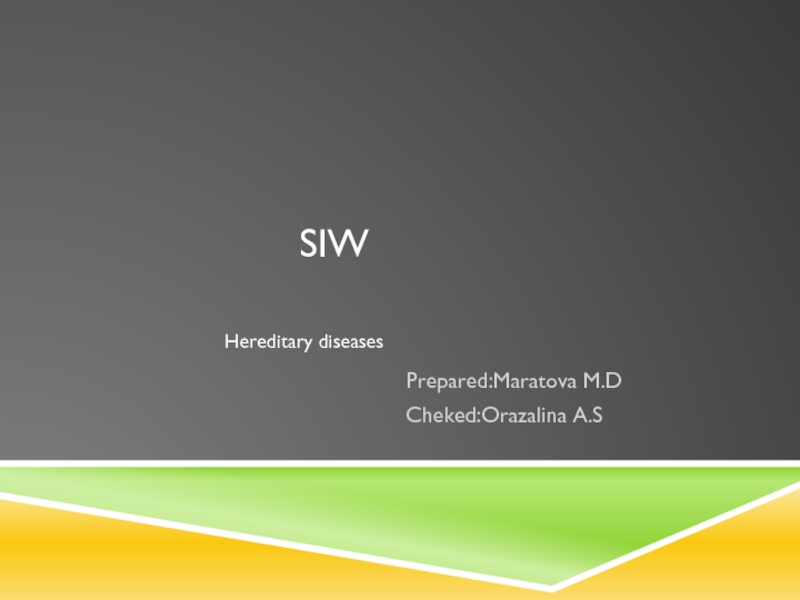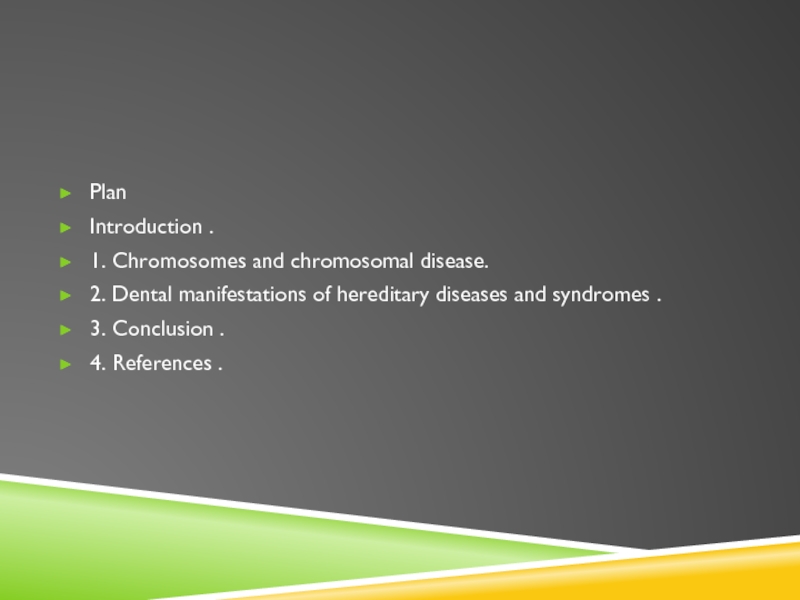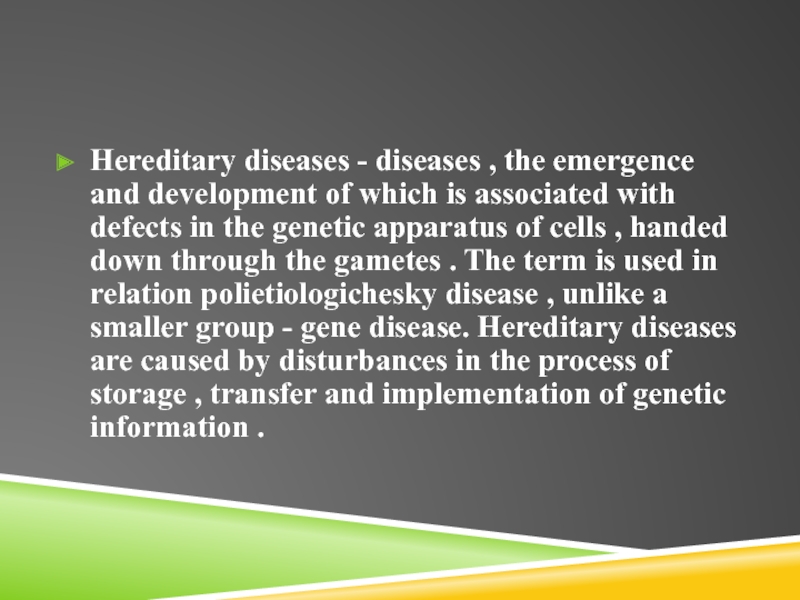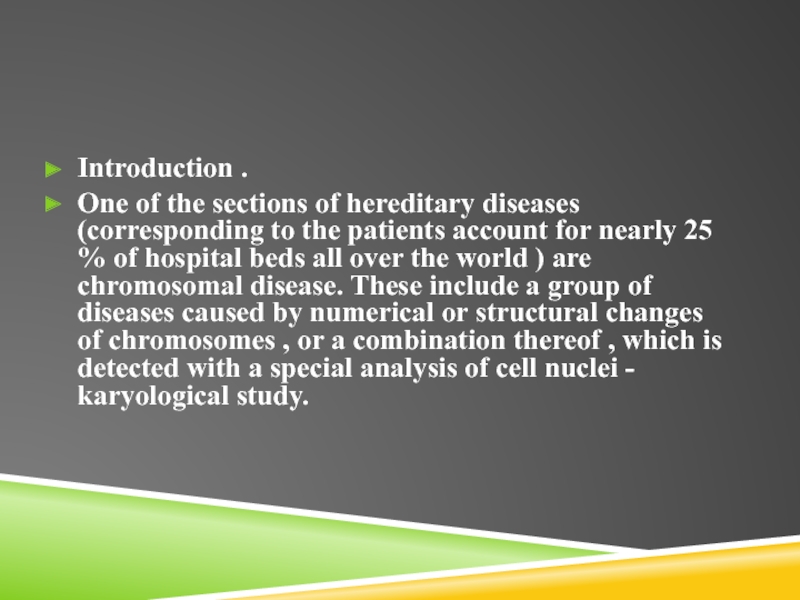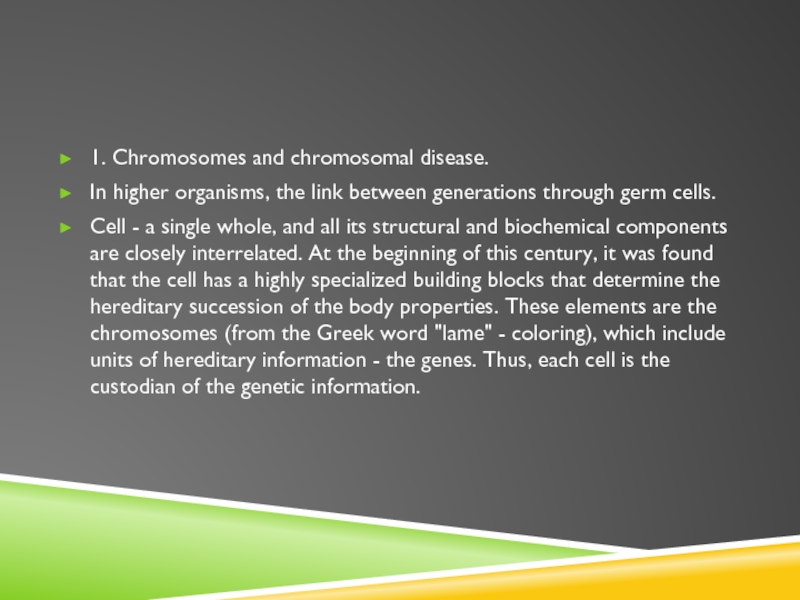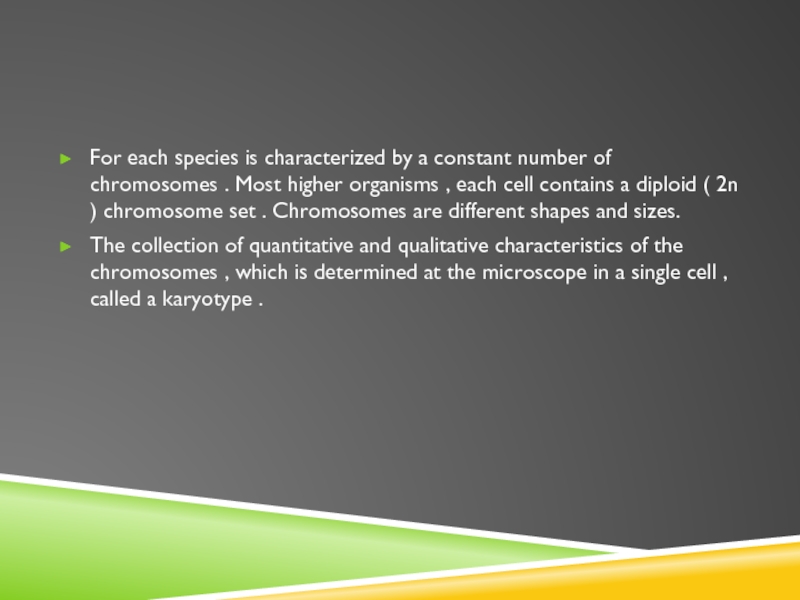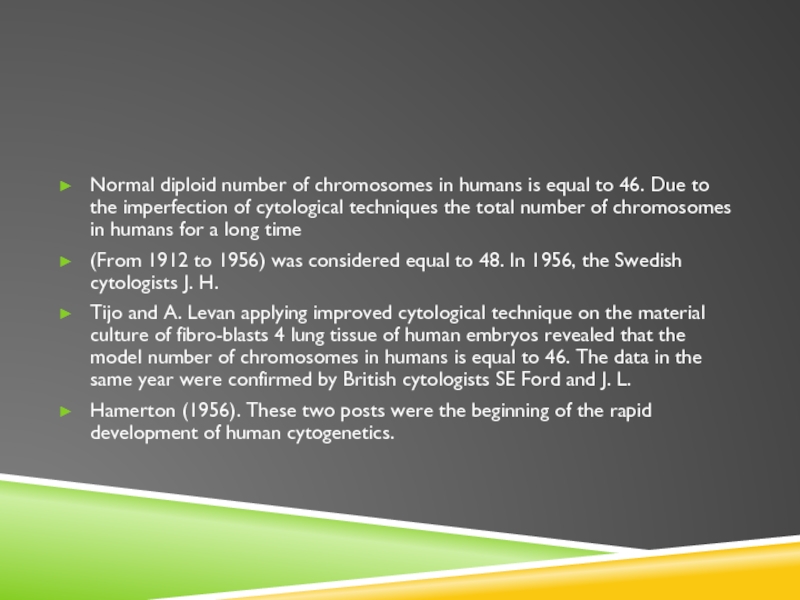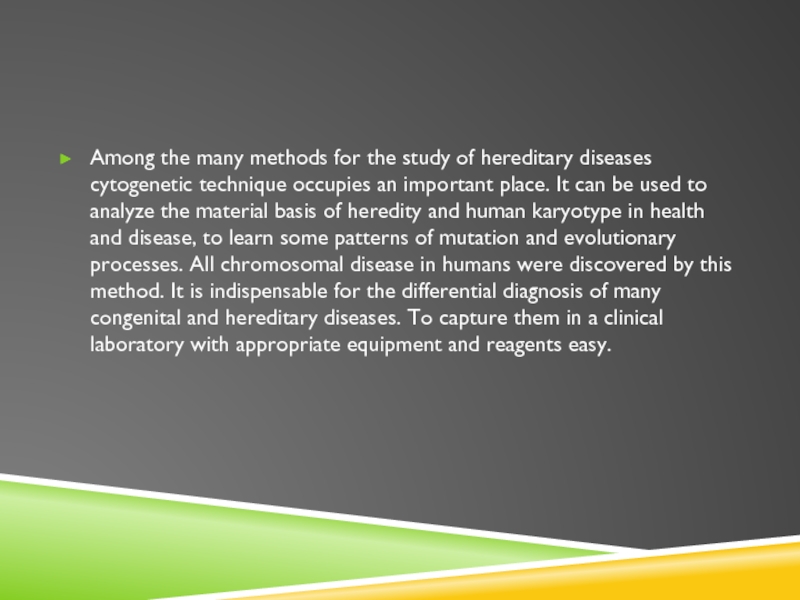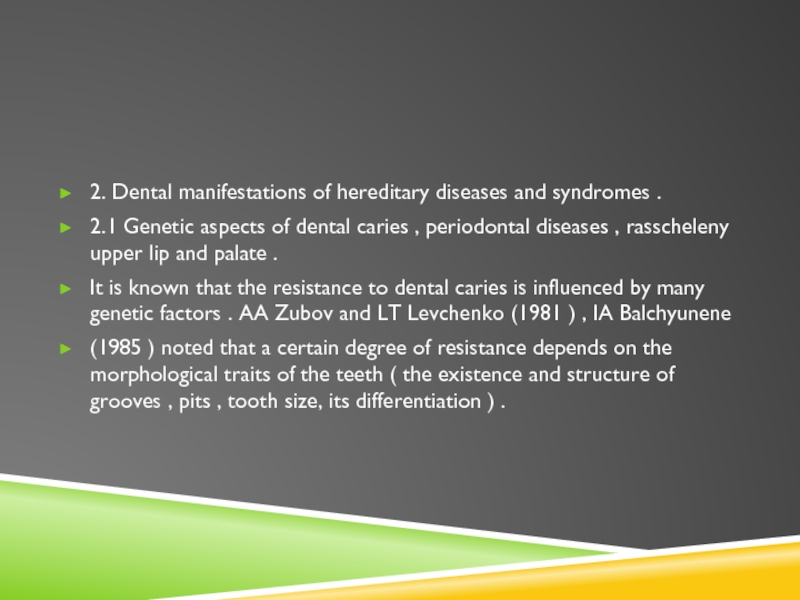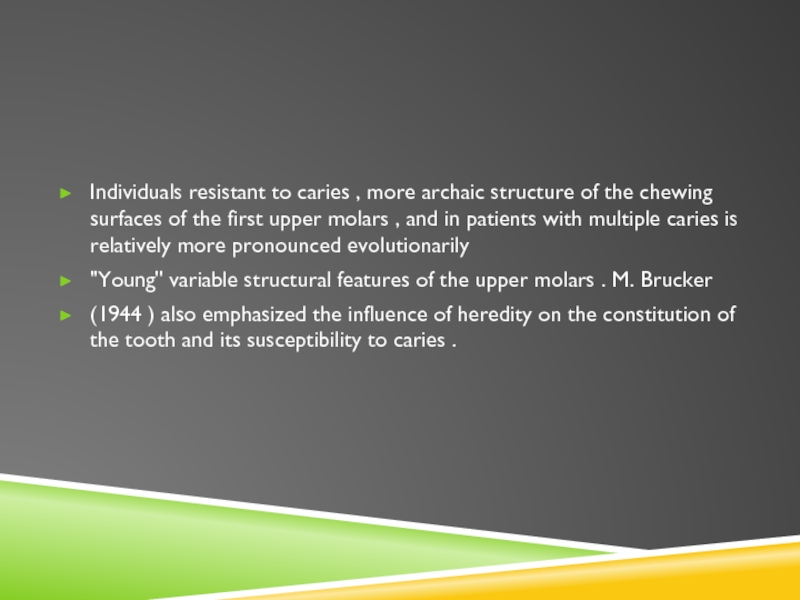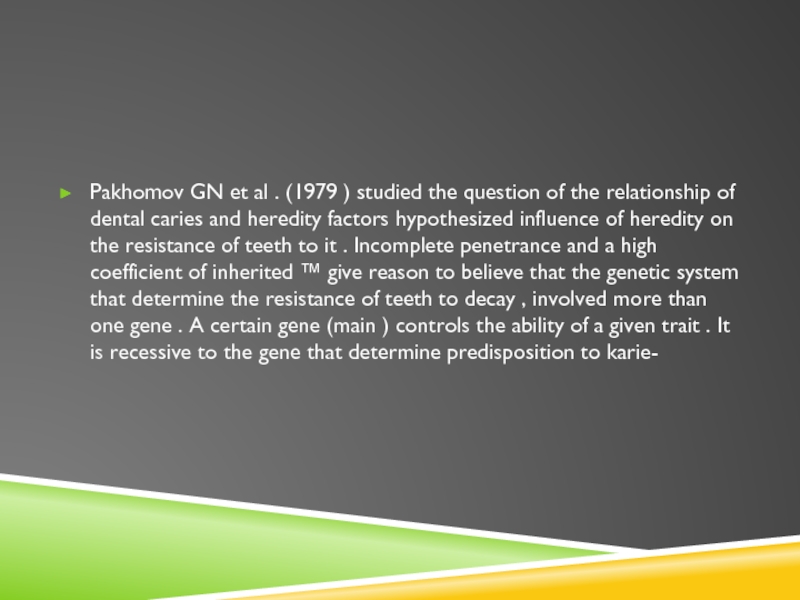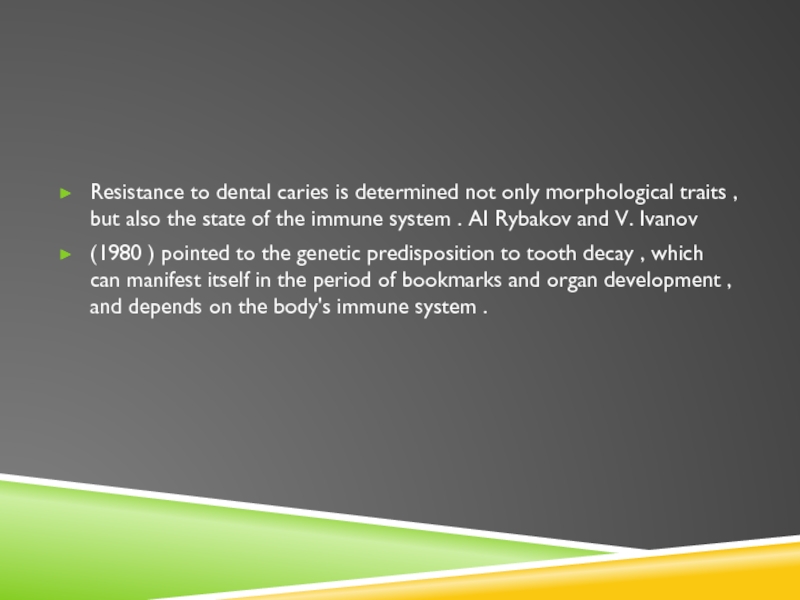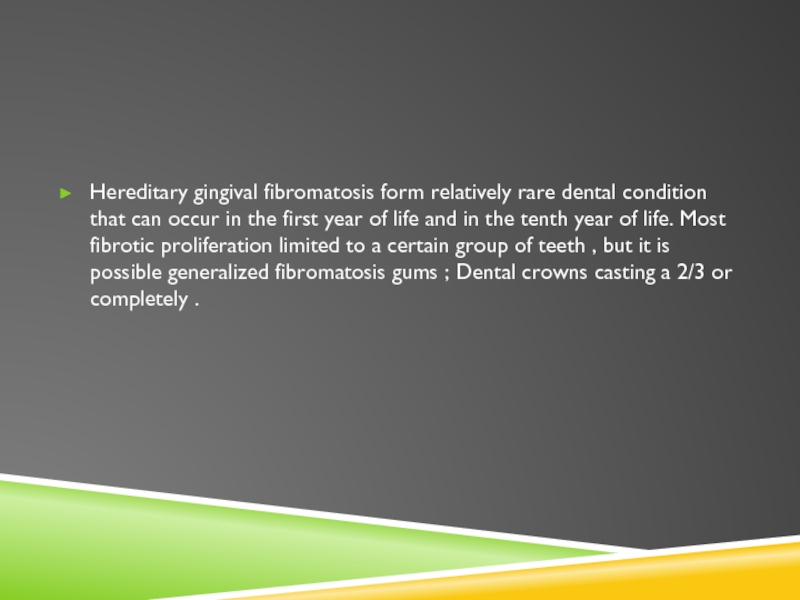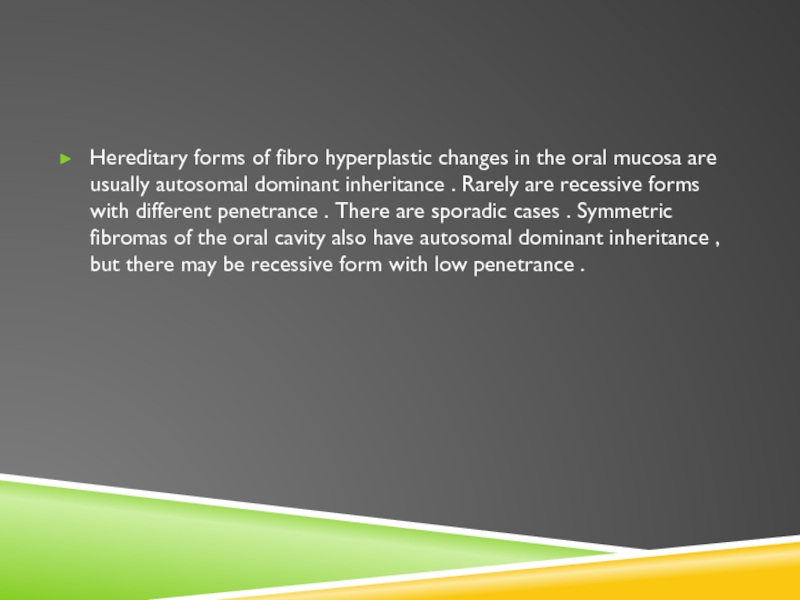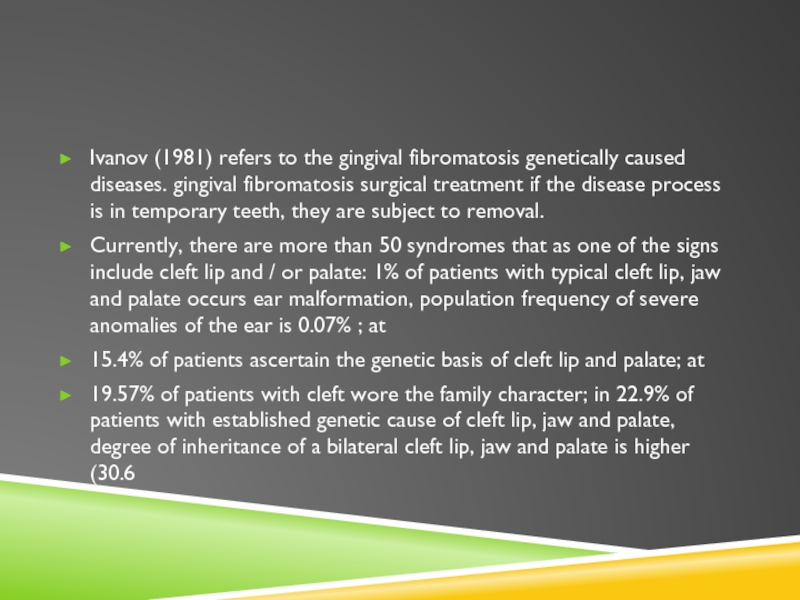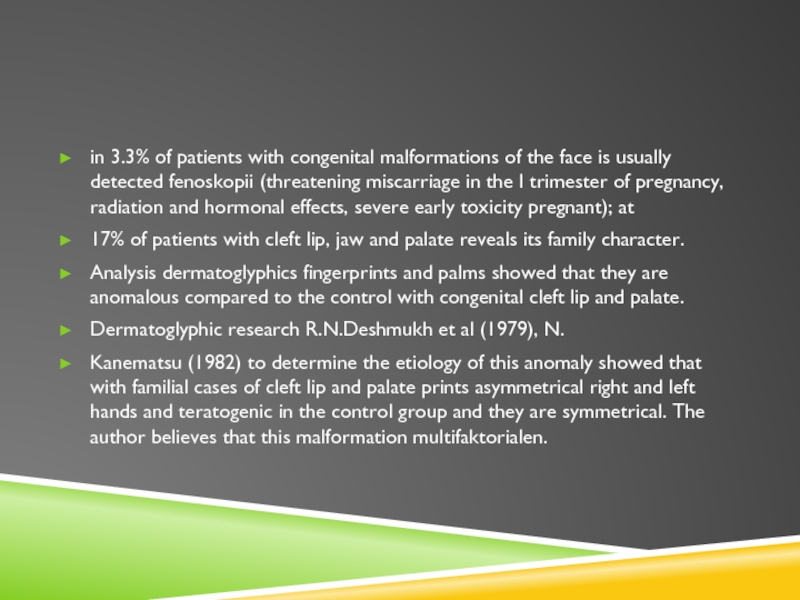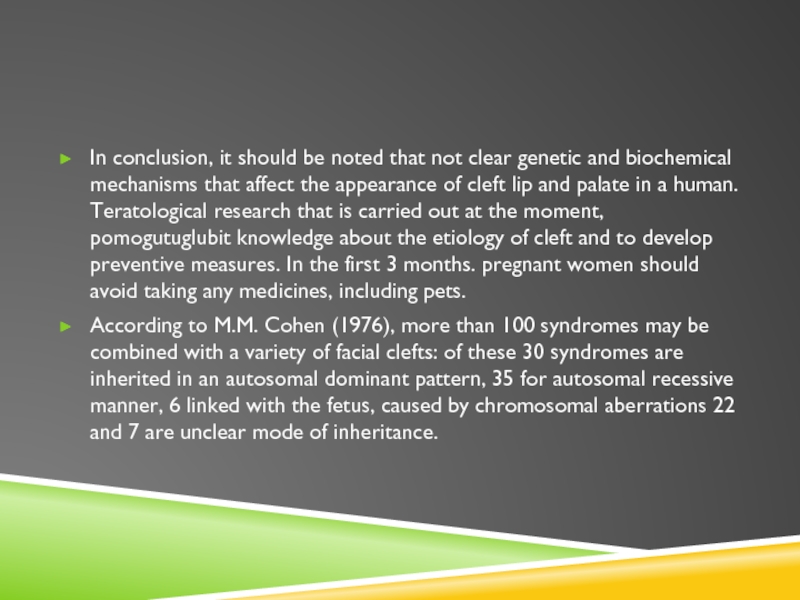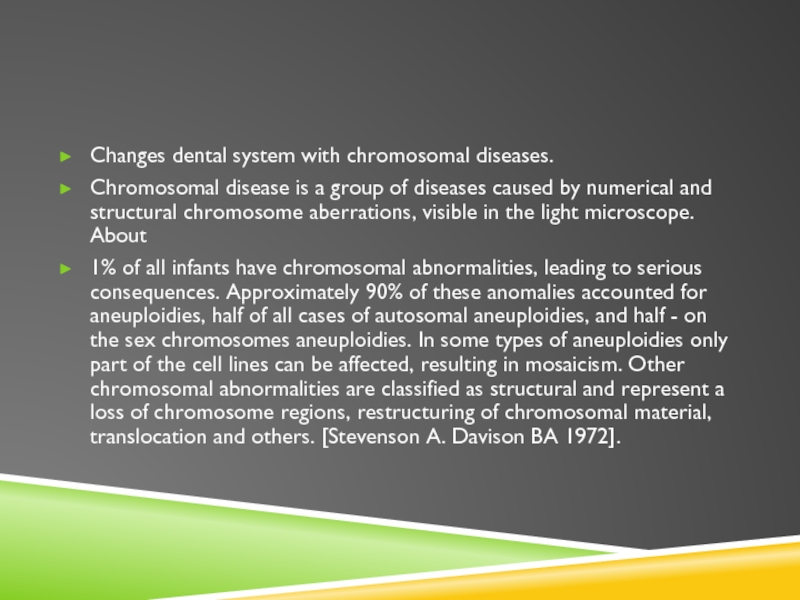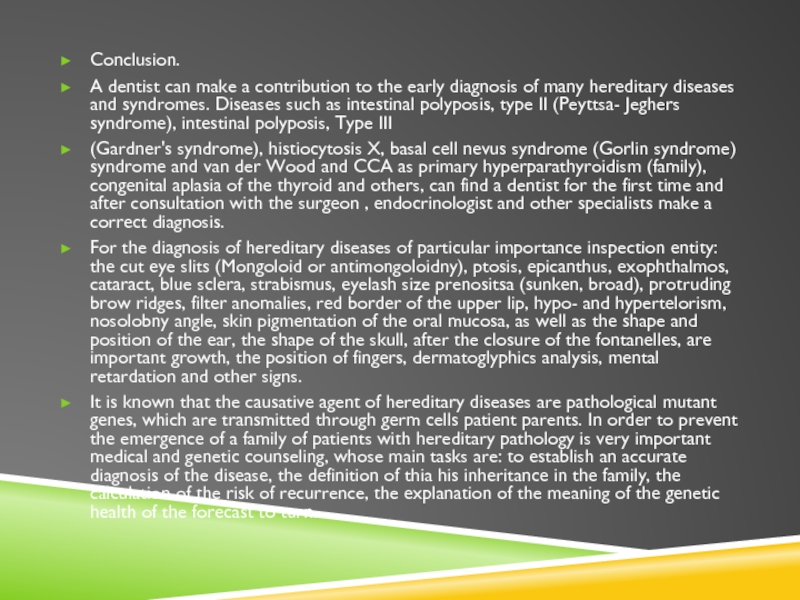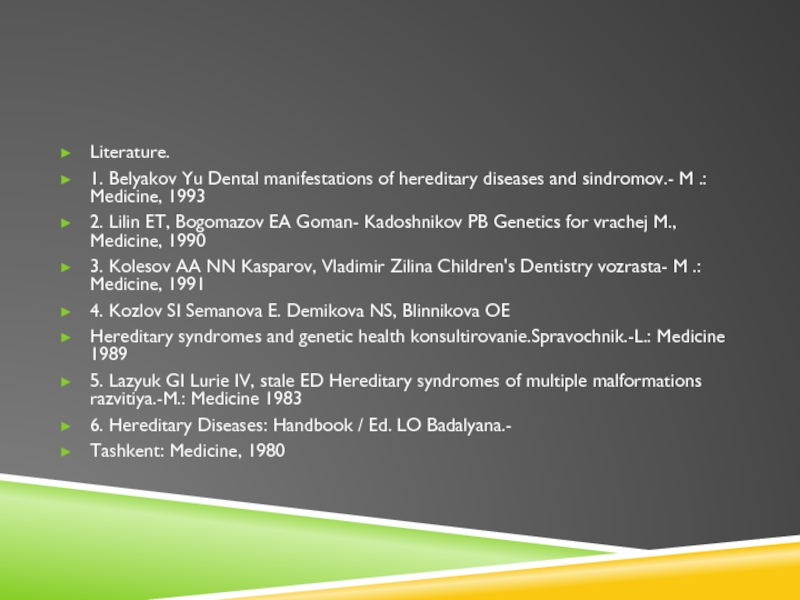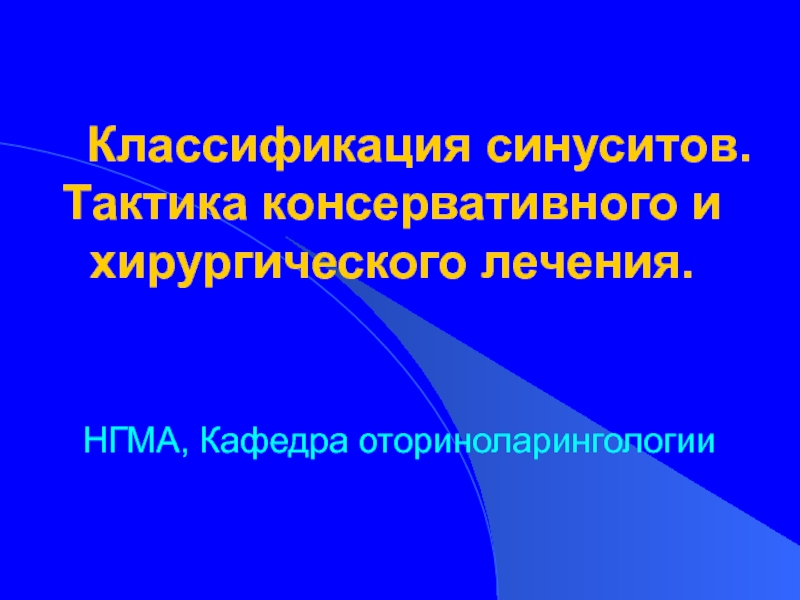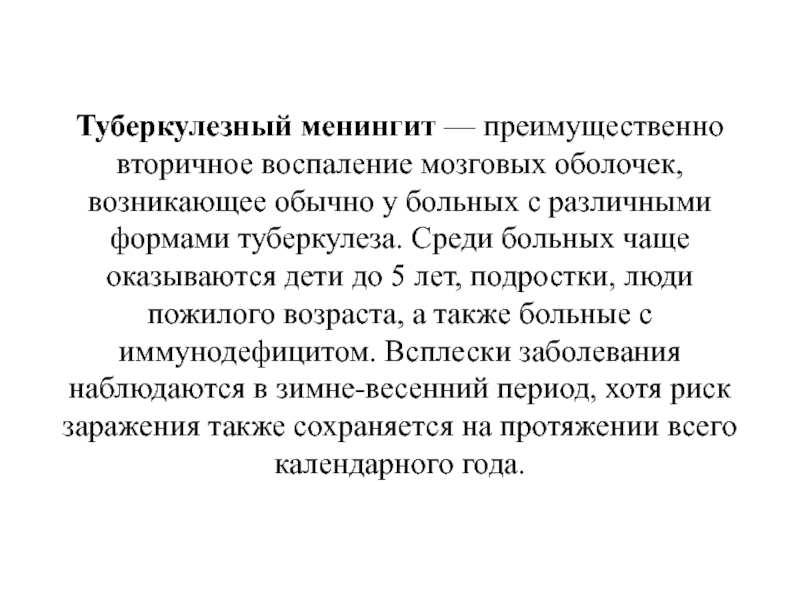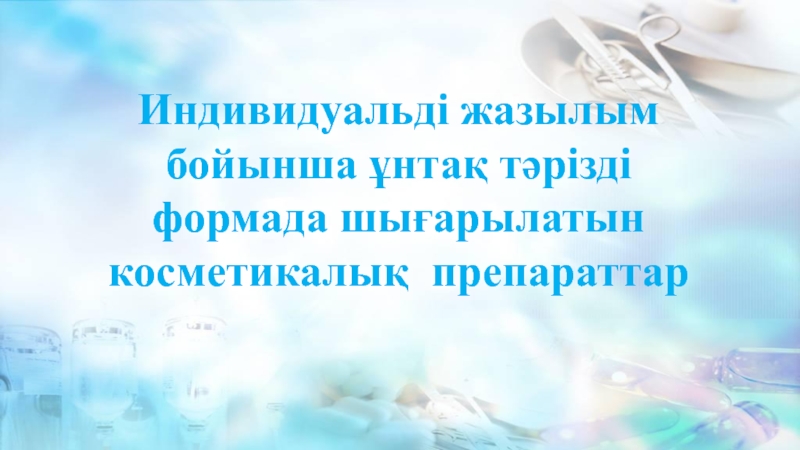- Главная
- Разное
- Дизайн
- Бизнес и предпринимательство
- Аналитика
- Образование
- Развлечения
- Красота и здоровье
- Финансы
- Государство
- Путешествия
- Спорт
- Недвижимость
- Армия
- Графика
- Культурология
- Еда и кулинария
- Лингвистика
- Английский язык
- Астрономия
- Алгебра
- Биология
- География
- Детские презентации
- Информатика
- История
- Литература
- Маркетинг
- Математика
- Медицина
- Менеджмент
- Музыка
- МХК
- Немецкий язык
- ОБЖ
- Обществознание
- Окружающий мир
- Педагогика
- Русский язык
- Технология
- Физика
- Философия
- Химия
- Шаблоны, картинки для презентаций
- Экология
- Экономика
- Юриспруденция
SIW. Hereditary diseases презентация
Содержание
- 1. SIW. Hereditary diseases
- 2. Plan Introduction . 1. Chromosomes
- 3. Hereditary diseases - diseases , the emergence
- 4. Introduction . One of the sections
- 5. 1. Chromosomes and chromosomal disease. In
- 6. For each species is characterized by
- 7. Normal diploid number of chromosomes
- 8. Among the many methods for the
- 9. 2. Dental manifestations of hereditary
- 10. Individuals resistant to caries ,
- 11. Pakhomov GN et al .
- 12. Resistance to dental caries is
- 13. Hereditary gingival fibromatosis form relatively
- 14. Hereditary forms of fibro hyperplastic changes
- 15. Ivanov (1981) refers to the gingival
- 16. in 3.3% of patients with congenital
- 17. In conclusion, it should be noted
- 18. Changes dental system with chromosomal diseases.
- 19. Conclusion. A dentist can make a contribution
- 20. Literature. 1. Belyakov Yu Dental manifestations of
Слайд 2
Plan
Introduction .
1. Chromosomes and chromosomal disease.
2. Dental manifestations of hereditary diseases
and syndromes .
3. Conclusion .
4. References .
3. Conclusion .
4. References .
Слайд 3Hereditary diseases - diseases , the emergence and development of which
is associated with defects in the genetic apparatus of cells , handed down through the gametes . The term is used in relation polietiologichesky disease , unlike a smaller group - gene disease. Hereditary diseases are caused by disturbances in the process of storage , transfer and implementation of genetic information .
Слайд 4
Introduction .
One of the sections of hereditary diseases (corresponding to the
patients account for nearly 25 % of hospital beds all over the world ) are chromosomal disease. These include a group of diseases caused by numerical or structural changes of chromosomes , or a combination thereof , which is detected with a special analysis of cell nuclei - karyological study.
Слайд 5
1. Chromosomes and chromosomal disease.
In higher organisms, the link between generations
through germ cells.
Cell - a single whole, and all its structural and biochemical components are closely interrelated. At the beginning of this century, it was found that the cell has a highly specialized building blocks that determine the hereditary succession of the body properties. These elements are the chromosomes (from the Greek word "lame" - coloring), which include units of hereditary information - the genes. Thus, each cell is the custodian of the genetic information.
Cell - a single whole, and all its structural and biochemical components are closely interrelated. At the beginning of this century, it was found that the cell has a highly specialized building blocks that determine the hereditary succession of the body properties. These elements are the chromosomes (from the Greek word "lame" - coloring), which include units of hereditary information - the genes. Thus, each cell is the custodian of the genetic information.
Слайд 6
For each species is characterized by a constant number of chromosomes
. Most higher organisms , each cell contains a diploid ( 2n ) chromosome set . Chromosomes are different shapes and sizes.
The collection of quantitative and qualitative characteristics of the chromosomes , which is determined at the microscope in a single cell , called a karyotype .
The collection of quantitative and qualitative characteristics of the chromosomes , which is determined at the microscope in a single cell , called a karyotype .
Слайд 7
Normal diploid number of chromosomes in humans is equal to 46.
Due to the imperfection of cytological techniques the total number of chromosomes in humans for a long time
(From 1912 to 1956) was considered equal to 48. In 1956, the Swedish cytologists J. H.
Tijo and A. Levan applying improved cytological technique on the material culture of fibro-blasts 4 lung tissue of human embryos revealed that the model number of chromosomes in humans is equal to 46. The data in the same year were confirmed by British cytologists SE Ford and J. L.
Hamerton (1956). These two posts were the beginning of the rapid development of human cytogenetics.
(From 1912 to 1956) was considered equal to 48. In 1956, the Swedish cytologists J. H.
Tijo and A. Levan applying improved cytological technique on the material culture of fibro-blasts 4 lung tissue of human embryos revealed that the model number of chromosomes in humans is equal to 46. The data in the same year were confirmed by British cytologists SE Ford and J. L.
Hamerton (1956). These two posts were the beginning of the rapid development of human cytogenetics.
Слайд 8
Among the many methods for the study of hereditary diseases cytogenetic
technique occupies an important place. It can be used to analyze the material basis of heredity and human karyotype in health and disease, to learn some patterns of mutation and evolutionary processes. All chromosomal disease in humans were discovered by this method. It is indispensable for the differential diagnosis of many congenital and hereditary diseases. To capture them in a clinical laboratory with appropriate equipment and reagents easy.
Слайд 9
2. Dental manifestations of hereditary diseases and syndromes .
2.1 Genetic aspects
of dental caries , periodontal diseases , rasscheleny upper lip and palate .
It is known that the resistance to dental caries is influenced by many genetic factors . AA Zubov and LT Levchenko (1981 ) , IA Balchyunene
(1985 ) noted that a certain degree of resistance depends on the morphological traits of the teeth ( the existence and structure of grooves , pits , tooth size, its differentiation ) .
It is known that the resistance to dental caries is influenced by many genetic factors . AA Zubov and LT Levchenko (1981 ) , IA Balchyunene
(1985 ) noted that a certain degree of resistance depends on the morphological traits of the teeth ( the existence and structure of grooves , pits , tooth size, its differentiation ) .
Слайд 10
Individuals resistant to caries , more archaic structure of the chewing
surfaces of the first upper molars , and in patients with multiple caries is relatively more pronounced evolutionarily
"Young" variable structural features of the upper molars . M. Brucker
(1944 ) also emphasized the influence of heredity on the constitution of the tooth and its susceptibility to caries .
"Young" variable structural features of the upper molars . M. Brucker
(1944 ) also emphasized the influence of heredity on the constitution of the tooth and its susceptibility to caries .
Слайд 11
Pakhomov GN et al . (1979 ) studied the question of
the relationship of dental caries and heredity factors hypothesized influence of heredity on the resistance of teeth to it . Incomplete penetrance and a high coefficient of inherited ™ give reason to believe that the genetic system that determine the resistance of teeth to decay , involved more than one gene . A certain gene (main ) controls the ability of a given trait . It is recessive to the gene that determine predisposition to karie-
Слайд 12
Resistance to dental caries is determined not only morphological traits ,
but also the state of the immune system . AI Rybakov and V. Ivanov
(1980 ) pointed to the genetic predisposition to tooth decay , which can manifest itself in the period of bookmarks and organ development , and depends on the body's immune system .
(1980 ) pointed to the genetic predisposition to tooth decay , which can manifest itself in the period of bookmarks and organ development , and depends on the body's immune system .
Слайд 13
Hereditary gingival fibromatosis form relatively rare dental condition that can occur
in the first year of life and in the tenth year of life. Most fibrotic proliferation limited to a certain group of teeth , but it is possible generalized fibromatosis gums ; Dental crowns casting a 2/3 or completely .
Слайд 14
Hereditary forms of fibro hyperplastic changes in the oral mucosa are
usually autosomal dominant inheritance . Rarely are recessive forms with different penetrance . There are sporadic cases . Symmetric fibromas of the oral cavity also have autosomal dominant inheritance , but there may be recessive form with low penetrance .
Слайд 15
Ivanov (1981) refers to the gingival fibromatosis genetically caused diseases. gingival
fibromatosis surgical treatment if the disease process is in temporary teeth, they are subject to removal.
Currently, there are more than 50 syndromes that as one of the signs include cleft lip and / or palate: 1% of patients with typical cleft lip, jaw and palate occurs ear malformation, population frequency of severe anomalies of the ear is 0.07% ; at
15.4% of patients ascertain the genetic basis of cleft lip and palate; at
19.57% of patients with cleft wore the family character; in 22.9% of patients with established genetic cause of cleft lip, jaw and palate, degree of inheritance of a bilateral cleft lip, jaw and palate is higher (30.6
Currently, there are more than 50 syndromes that as one of the signs include cleft lip and / or palate: 1% of patients with typical cleft lip, jaw and palate occurs ear malformation, population frequency of severe anomalies of the ear is 0.07% ; at
15.4% of patients ascertain the genetic basis of cleft lip and palate; at
19.57% of patients with cleft wore the family character; in 22.9% of patients with established genetic cause of cleft lip, jaw and palate, degree of inheritance of a bilateral cleft lip, jaw and palate is higher (30.6
Слайд 16
in 3.3% of patients with congenital malformations of the face is
usually detected fenoskopii (threatening miscarriage in the I trimester of pregnancy, radiation and hormonal effects, severe early toxicity pregnant); at
17% of patients with cleft lip, jaw and palate reveals its family character.
Analysis dermatoglyphics fingerprints and palms showed that they are anomalous compared to the control with congenital cleft lip and palate.
Dermatoglyphic research R.N.Deshmukh et al (1979), N.
Kanematsu (1982) to determine the etiology of this anomaly showed that with familial cases of cleft lip and palate prints asymmetrical right and left hands and teratogenic in the control group and they are symmetrical. The author believes that this malformation multifaktorialen.
17% of patients with cleft lip, jaw and palate reveals its family character.
Analysis dermatoglyphics fingerprints and palms showed that they are anomalous compared to the control with congenital cleft lip and palate.
Dermatoglyphic research R.N.Deshmukh et al (1979), N.
Kanematsu (1982) to determine the etiology of this anomaly showed that with familial cases of cleft lip and palate prints asymmetrical right and left hands and teratogenic in the control group and they are symmetrical. The author believes that this malformation multifaktorialen.
Слайд 17
In conclusion, it should be noted that not clear genetic and
biochemical mechanisms that affect the appearance of cleft lip and palate in a human. Teratological research that is carried out at the moment, pomogutuglubit knowledge about the etiology of cleft and to develop preventive measures. In the first 3 months. pregnant women should avoid taking any medicines, including pets.
According to M.M. Cohen (1976), more than 100 syndromes may be combined with a variety of facial clefts: of these 30 syndromes are inherited in an autosomal dominant pattern, 35 for autosomal recessive manner, 6 linked with the fetus, caused by chromosomal aberrations 22 and 7 are unclear mode of inheritance.
According to M.M. Cohen (1976), more than 100 syndromes may be combined with a variety of facial clefts: of these 30 syndromes are inherited in an autosomal dominant pattern, 35 for autosomal recessive manner, 6 linked with the fetus, caused by chromosomal aberrations 22 and 7 are unclear mode of inheritance.
Слайд 18
Changes dental system with chromosomal diseases.
Chromosomal disease is a group of
diseases caused by numerical and structural chromosome aberrations, visible in the light microscope. About
1% of all infants have chromosomal abnormalities, leading to serious consequences. Approximately 90% of these anomalies accounted for aneuploidies, half of all cases of autosomal aneuploidies, and half - on the sex chromosomes aneuploidies. In some types of aneuploidies only part of the cell lines can be affected, resulting in mosaicism. Other chromosomal abnormalities are classified as structural and represent a loss of chromosome regions, restructuring of chromosomal material, translocation and others. [Stevenson A. Davison BA 1972].
1% of all infants have chromosomal abnormalities, leading to serious consequences. Approximately 90% of these anomalies accounted for aneuploidies, half of all cases of autosomal aneuploidies, and half - on the sex chromosomes aneuploidies. In some types of aneuploidies only part of the cell lines can be affected, resulting in mosaicism. Other chromosomal abnormalities are classified as structural and represent a loss of chromosome regions, restructuring of chromosomal material, translocation and others. [Stevenson A. Davison BA 1972].
Слайд 19Conclusion.
A dentist can make a contribution to the early diagnosis of
many hereditary diseases and syndromes. Diseases such as intestinal polyposis, type II (Peyttsa- Jeghers syndrome), intestinal polyposis, Type III
(Gardner's syndrome), histiocytosis X, basal cell nevus syndrome (Gorlin syndrome) syndrome and van der Wood and CCA as primary hyperparathyroidism (family), congenital aplasia of the thyroid and others, can find a dentist for the first time and after consultation with the surgeon , endocrinologist and other specialists make a correct diagnosis.
For the diagnosis of hereditary diseases of particular importance inspection entity: the cut eye slits (Mongoloid or antimongoloidny), ptosis, epicanthus, exophthalmos, cataract, blue sclera, strabismus, eyelash size prenositsa (sunken, broad), protruding brow ridges, filter anomalies, red border of the upper lip, hypo- and hypertelorism, nosolobny angle, skin pigmentation of the oral mucosa, as well as the shape and position of the ear, the shape of the skull, after the closure of the fontanelles, are important growth, the position of fingers, dermatoglyphics analysis, mental retardation and other signs.
It is known that the causative agent of hereditary diseases are pathological mutant genes, which are transmitted through germ cells patient parents. In order to prevent the emergence of a family of patients with hereditary pathology is very important medical and genetic counseling, whose main tasks are: to establish an accurate diagnosis of the disease, the definition of thia his inheritance in the family, the calculation of the risk of recurrence, the explanation of the meaning of the genetic health of the forecast to turn.
(Gardner's syndrome), histiocytosis X, basal cell nevus syndrome (Gorlin syndrome) syndrome and van der Wood and CCA as primary hyperparathyroidism (family), congenital aplasia of the thyroid and others, can find a dentist for the first time and after consultation with the surgeon , endocrinologist and other specialists make a correct diagnosis.
For the diagnosis of hereditary diseases of particular importance inspection entity: the cut eye slits (Mongoloid or antimongoloidny), ptosis, epicanthus, exophthalmos, cataract, blue sclera, strabismus, eyelash size prenositsa (sunken, broad), protruding brow ridges, filter anomalies, red border of the upper lip, hypo- and hypertelorism, nosolobny angle, skin pigmentation of the oral mucosa, as well as the shape and position of the ear, the shape of the skull, after the closure of the fontanelles, are important growth, the position of fingers, dermatoglyphics analysis, mental retardation and other signs.
It is known that the causative agent of hereditary diseases are pathological mutant genes, which are transmitted through germ cells patient parents. In order to prevent the emergence of a family of patients with hereditary pathology is very important medical and genetic counseling, whose main tasks are: to establish an accurate diagnosis of the disease, the definition of thia his inheritance in the family, the calculation of the risk of recurrence, the explanation of the meaning of the genetic health of the forecast to turn.
Слайд 20Literature.
1. Belyakov Yu Dental manifestations of hereditary diseases and sindromov.- M
.: Medicine, 1993
2. Lilin ET, Bogomazov EA Goman- Kadoshnikov PB Genetics for vrachej M., Medicine, 1990
3. Kolesov AA NN Kasparov, Vladimir Zilina Children's Dentistry vozrasta- M .: Medicine, 1991
4. Kozlov SI Semanova E. Demikova NS, Blinnikova OE
Hereditary syndromes and genetic health konsultirovanie.Spravochnik.-L.: Medicine 1989
5. Lazyuk GI Lurie IV, stale ED Hereditary syndromes of multiple malformations razvitiya.-M.: Medicine 1983
6. Hereditary Diseases: Handbook / Ed. LO Badalyana.-
Tashkent: Medicine, 1980
2. Lilin ET, Bogomazov EA Goman- Kadoshnikov PB Genetics for vrachej M., Medicine, 1990
3. Kolesov AA NN Kasparov, Vladimir Zilina Children's Dentistry vozrasta- M .: Medicine, 1991
4. Kozlov SI Semanova E. Demikova NS, Blinnikova OE
Hereditary syndromes and genetic health konsultirovanie.Spravochnik.-L.: Medicine 1989
5. Lazyuk GI Lurie IV, stale ED Hereditary syndromes of multiple malformations razvitiya.-M.: Medicine 1983
6. Hereditary Diseases: Handbook / Ed. LO Badalyana.-
Tashkent: Medicine, 1980
